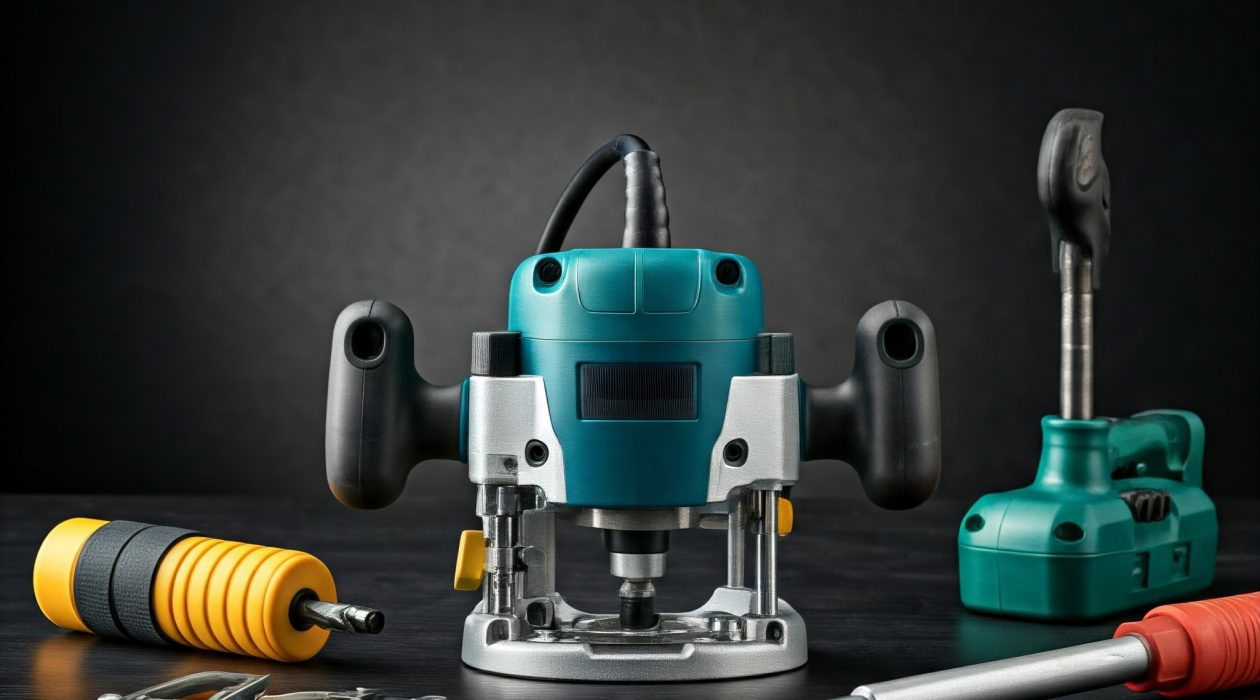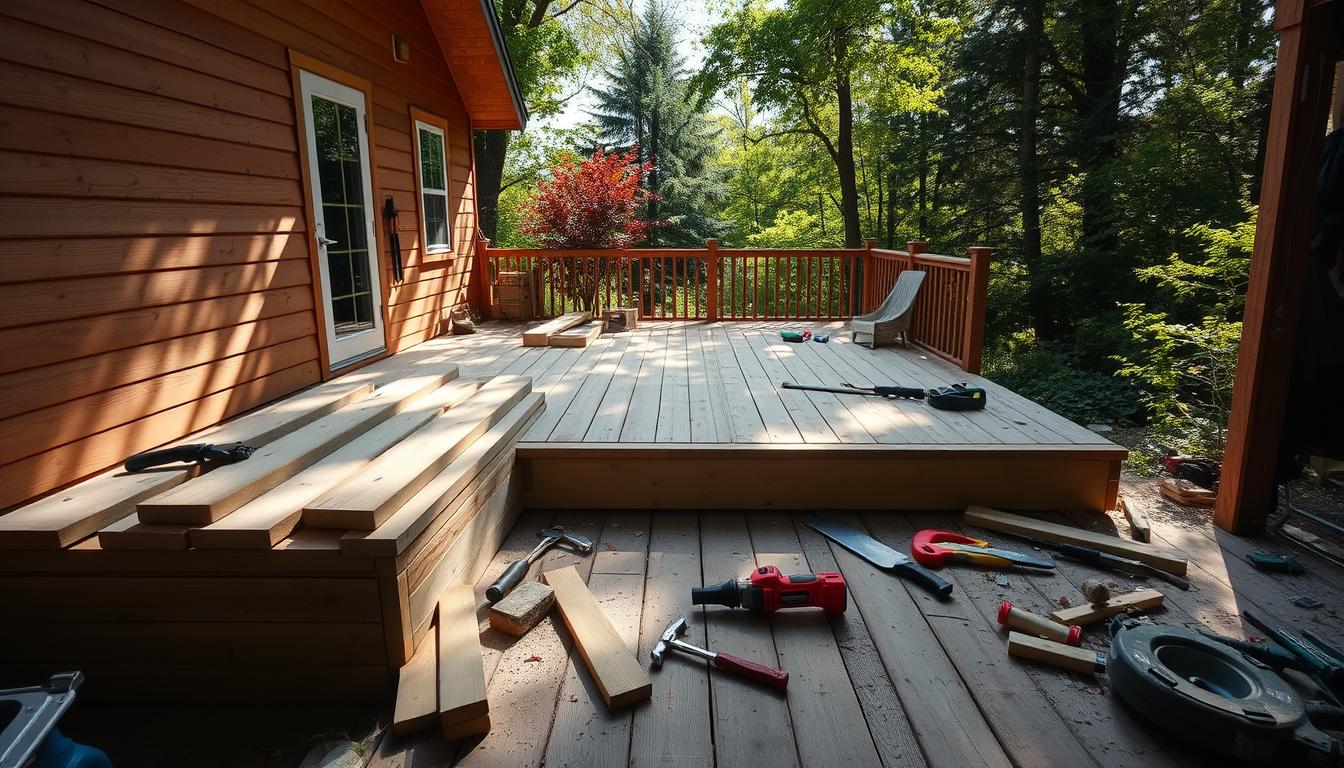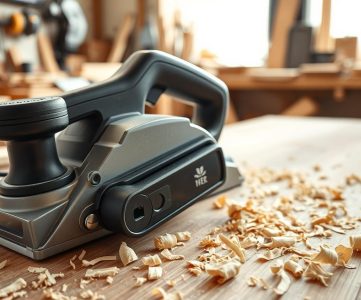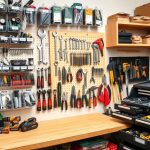Mastering the router is essential for woodworkers and DIY enthusiasts aiming for professional-quality edges. The right router tips and practice can enhance woodworking skills, leading to high-quality results. Understanding router tools and components, along with advanced techniques, is key to mastering edge profiles and decorative cuts.
To begin mastering the router, grasping the basics of router tools and components is crucial. Following expert router tips and guidelines can help woodworkers achieve professional-quality edges. This skill demands patience, practice, and dedication. Yet, with the right approach, anyone can become proficient in using this powerful tool.
Introduction to Mastering the Router
Learning to master the router opens up new creative possibilities for woodworkers. By focusing on mastering the router and learning expert router tips, woodworkers can achieve professional-quality edges. This skill can elevate woodworking skills to new heights.
Key Takeaways
- Mastering the router is a crucial skill for woodworkers and DIY enthusiasts
- Understanding router tools and their components is essential for achieving professional-quality edges
- Practice and patience are necessary for mastering the router
- Expert router tips and guidelines can help woodworkers improve their skills
- Mastering the router can expand creative possibilities and produce high-quality results
- Learning how to master the router requires a comprehensive approach
- With the right approach, anyone can become proficient in using the router
Understanding Router Tools and Their Components
In woodworking, the right tools are key to top-notch results. Woodworking router tools are essential, and knowing their parts is crucial. Bits and bases are vital for a router’s performance.
Woodworking offers various routers, each with its own strengths. The choice between fixed-base and plunge routers depends on the project’s needs. Essential router bits, like straight and rabbeting bits, influence the cut type and finish quality.
Types of Routers Available
- Fixed-base routers: ideal for edge profiling and grooving
- Plunge routers: suitable for mortising and making decorative cuts
Essential Router Bits
Router bits are critical, as they directly interact with the workpiece. The right bit choice depends on the cut type, material, and desired finish. Common bits include straight, rabbeting, and decorative ones.
Power and Speed Controls
Power and speed controls are vital in woodworking router tools. They allow for precise control over the routing process. Adjusting speed and power optimizes tools for specific tasks, enhancing quality and efficiency.
Safety First: Essential Precautions for Router Use
When using power tools like routers, safety must be paramount. DIY edging safety is key to avoiding injuries and maintaining a safe workspace. It’s crucial to adhere to proper router safety precautions to minimize risks.
A clean and organized workspace is essential for accident prevention. Ensure the area is well-lit and the work surface is stable and secure. Wearing personal protective equipment, such as safety glasses, ear protection, and a dust mask, is also vital.
Personal Protective Equipment
- Safety glasses to protect eyes from debris
- Ear protection to prevent hearing damage
- Dust mask to avoid inhaling dust and particles
By adhering to these guidelines and taking the necessary DIY edging safety precautions, individuals can ensure a safe and successful routing experience. Remember, safety is the first consideration when working with power tools like routers.
Setting Up Your Router for Perfect Results
To achieve perfect results with your router, it’s essential to set it up correctly. This involves following specific router tips for setup, which will ensure your project turns out as expected. Proper setup is crucial for achieving high-quality outcomes, and it’s worth taking the time to get it right.
When setting up your router, consider the following key factors:
- Proper router height adjustment: This ensures that your router bit is at the correct height for the material you’re working with.
- Fence alignment techniques: Aligning your fence correctly will help you achieve accurate and consistent results.
- Speed selection guidelines: Choosing the right speed for your router will depend on the type of material you’re working with and the specific project requirements.
By following these router tips for setup, you’ll be able to achieve perfect results and take your woodworking projects to the next level. Remember to always refer to your router’s user manual for specific setup instructions, and don’t hesitate to experiment with different techniques to find what works best for you.
With practice and patience, you’ll become proficient in setting up your router for perfect results, and your woodworking projects will benefit from the attention to detail and care that you put into each one.
| Router Setup Factor | Importance | Tips |
|---|---|---|
| Proper router height adjustment | High | Refer to user manual for specific instructions |
| Fence alignment techniques | Medium | Use a straightedge to ensure accuracy |
| Speed selection guidelines | High | Choose speed based on material type and project requirements |
Basic Router Techniques for Beginners
Mastering the basics is key to achieving professional-quality woodworking. For those new to woodworking or DIY, understanding basic router techniques is vital. Woodworking router tools for beginners might seem daunting, but with proper guidance, anyone can master them.
Understanding fundamental techniques is crucial for beginners. This includes learning how to handle the router, make basic cuts, and use woodworking router tools safely and efficiently. By mastering these basics, beginners lay a solid foundation for more complex techniques.
Some key techniques to focus on include:
- Proper router handling and control
- Basic cutting techniques, such as straight cuts and curved cuts
- Using woodworking router tools for beginners to create decorative edges and profiles
By following these basic techniques and practicing regularly, beginners can quickly become proficient in using woodworking router tools. They can then start creating professional-quality projects. Always remember to follow safety guidelines and use the right tools for the job to ensure the best results.
With patience and practice, anyone can master the basics of woodworking and become a skilled craftsman, using woodworking router tools for beginners to create beautiful and functional pieces.
Advanced Router Tools and Accessories
For those aiming to elevate their DIY edging projects, advanced router tools and accessories are crucial. The right equipment can lead to professional-looking results and open up new creative avenues. DIY edging with advanced tools allows for intricate designs and precise cuts, vital for any serious woodworker.
Key tools to consider include router tables, guide bushings, and templates. These tools facilitate precision work, making complex profiles easier to achieve. Router tables offer a stable, flat surface for routing, ensuring accurate cuts. Guide bushings and templates enable the creation of detailed designs and patterns with precision.
Benefits of Advanced Router Tools
- Increased precision and accuracy
- Ability to create complex profiles and designs
- Improved safety and control
- Enhanced creative possibilities
Integrating these advanced tools into your workflow can significantly enhance your DIY edging projects. Whether you’re an experienced woodworker or just beginning, mastering DIY edging with advanced tools is essential.
Mastering Edge Profiles and Decorative Cuts
To achieve professional-quality results in woodworking, mastering edge profiles and decorative cuts is crucial. With the right router tips and techniques, you can enhance the aesthetic appeal of your projects. This will help you develop a high level of skill in using your router for decorative cuts.
When it comes to edge profiles, clean roundovers and perfect chamfers are essential techniques to master. By using the right router bits and adjusting the depth and speed of your router, you can create smooth, consistent edges. These edges add a professional touch to your work.
Creating Clean Roundovers
To create clean roundovers, use a roundover bit with a bearing guide to help you maintain a consistent edge profile. Start by setting the depth of your router to the desired radius, then adjust the speed to a moderate level. Use a steady, consistent motion to guide the router along the edge of your workpiece, applying gentle pressure to maintain control.
Perfect Chamfer Techniques
For perfect chamfers, use a chamfer bit with a adjustable angle setting to customize the angle of your chamfer. Start by setting the angle to the desired level, then adjust the depth of your router to the desired depth. Use a steady, consistent motion to guide the router along the edge of your workpiece, applying gentle pressure to maintain control.
By mastering these techniques and using the right router tips for edge profiles and decorative cuts, you can take your woodworking skills to the next level. You will create professional-quality results that will impress anyone.
Troubleshooting Common Router Problems
Working with woodworking router tools can sometimes lead to issues, even with the right setup and technique. Troubleshooting these problems is key to solving them fast and getting back to your projects. Common issues include uneven cuts, bit breakage, and motor problems.
To tackle these issues, understanding their causes and solutions is crucial. For instance, uneven cuts often stem from a dull or incorrectly installed bit.
Other common problems and their solutions include:
- Bit breakage: usually due to excessive wear or misuse. Solution: regularly check and replace bits as necessary.
- Motor issues: often caused by overheating or neglect in maintenance. Solution: make sure there’s proper ventilation and follow the manufacturer’s maintenance advice.
By grasping the causes and fixes for these common issues, you can swiftly troubleshoot and fix problems with your woodworking router tools. This ensures your projects are completed efficiently and effectively.
Maintaining Your Router for Longevity
To keep your router running smoothly and lasting longer, regular maintenance is key. This includes cleaning, storing, and checking its performance. By following these DIY edging maintenance and router maintenance tips, you can avoid wear and tear. This reduces the need for repairs and keeps your router in top condition.
Regular tasks include cleaning the router and its parts, like the bits and bearings. This removes dust and debris that can slow it down. Storing it properly is also vital to prevent damage to the router and its components.
Cleaning and Storage Tips
- Use a soft brush to remove dust and debris from the router and its components
- Store the router in a dry, cool place, away from direct sunlight
- Use a router cover or case to protect the router from dust and debris
Bit Maintenance and Replacement
It’s also crucial to regularly check and maintain the router bits. Look for wear and tear, and replace them when necessary. By following these router maintenance tips, your router will continue to work well for a long time.
Regular Performance Checks
Regular checks on the router’s performance are essential. This includes verifying its speed, alignment, and overall performance. By following these DIY edging maintenance tips, you can spot issues early. This prevents damage to the router or your workpieces.
Taking Your Router Skills to the Next Level
The journey to mastering the router is a path of continuous learning and practice. Understanding the various tools and components, along with essential safety precautions, lays the groundwork. Proper setup and technique, combined with exploring advanced accessories, open up a world of creative possibilities.
As you refine your mastering the router skills, staying alert to common issues and maintaining your equipment is crucial. Regular cleaning, bit maintenance, and performance checks keep your router reliable. With each new router tip, your confidence and expertise grow, enabling you to handle more complex designs with precision.
The essence of mastering the router is your eagerness to experiment, learn, and expand your capabilities. By embracing the insights from this guide, you’re on the path to elevating your router skills. Achieving professional-quality edges will take your work to new heights.





